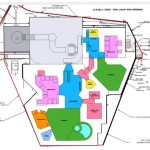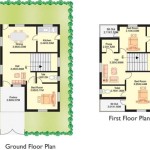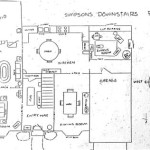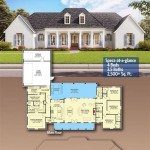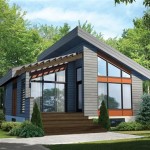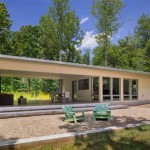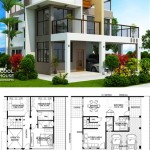French Style House Plans For Narrow Lots
The allure of French architecture, with its romantic and elegant details, extends beyond sprawling estates. It can be successfully adapted for narrower lots, offering homeowners the opportunity to create a charming and sophisticated residence even with spatial limitations. Understanding the core elements of French design and how they can be efficiently incorporated into smaller footprints is key to achieving this aesthetic.
French-style house plans often evoke images of grand chateaus, but the fundamental design principles can be scaled down to fit various needs and lot sizes. These principles include symmetrical facades, steeply pitched roofs, dormers, arched windows, and understated decorative elements. The challenge lies in integrating these characteristics in a way that maximizes space and functionality without overwhelming the architectural design. Careful planning and a focus on proportional scaling are essential to creating a cohesive and aesthetically pleasing result.
When considering French-style house plans for narrow lots, several key factors must be taken into account. These include the overall dimensions of the lot, local building codes and restrictions, the desired square footage of the house, and the homeowner's lifestyle and functional requirements. A thorough understanding of these factors will ensure that the chosen design is both practical and aesthetically pleasing.
Key Elements of French Style Adaptation for Narrow Lots
Adapting French architectural style for narrow lots necessitates a strategic approach to design. The challenge lies in maintaining the aesthetic integrity of the style while optimizing the use of limited space. This adaptation involves a careful consideration of proportion, scale, and the strategic placement of architectural details.
One crucial element is the emphasis on verticality. Building upwards, rather than outwards, allows for maximized living space without encroaching on neighboring properties or violating setback regulations. The incorporation of multiple stories, potentially including a finished attic or basement, can significantly increase the usable square footage of the home. This vertical expansion should be integrated seamlessly into the overall design, maintaining a balanced and harmonious appearance.
The selection of appropriate materials is equally important. Stucco exteriors, a hallmark of French Provincial and French Country styles, are well-suited for narrow lots. They provide a clean and elegant backdrop for other architectural details, such as stone accents and decorative trim. The use of lighter color palettes can further enhance the feeling of spaciousness and light, both inside and outside the home.
Windows play a significant role in French architectural design. Arched windows, dormers, and multi-paned windows are common features. While these elements can add visual interest, they must be strategically placed to maximize natural light and views without compromising privacy. Consider the orientation of the house and the placement of windows to optimize sunlight exposure and minimize glare. The size and style of the windows should be proportional to the overall dimensions of the house, avoiding any feeling of being oversized or out of place.
The roofline is another essential element of French design. Steeply pitched roofs are characteristic of many French architectural styles. This design feature not only adds visual interest but also allows for the incorporation of attic space, which can be used for storage, a home office, or additional living space. Dormers can further enhance the functionality and aesthetics of the roofline, providing additional light and ventilation to the attic space. The slope of the roof should be carefully considered, balancing aesthetic appeal with structural integrity and local climate conditions.
Maximizing Space and Functionality in Narrow Lot Designs
Narrow lots demand creative solutions for maximizing space and functionality. Clever design strategies are crucial for creating a comfortable and livable home within a limited footprint. Efficient floor plans, multi-functional spaces, and strategic storage solutions are essential for optimizing the use of every square foot.
Open floor plans are particularly well-suited for narrow lot designs. By eliminating unnecessary walls and partitions, these plans create a more spacious and airy feel. The integration of living, dining, and kitchen areas into a single, unified space can significantly enhance the sense of openness. However, careful consideration must be given to defining distinct zones within the open layout, using furniture placement, changes in flooring, or subtle architectural details to create a sense of separation and functionality.
Multi-functional spaces are another valuable tool for maximizing space in narrow lot homes. A guest bedroom that doubles as a home office, a dining room that can be transformed into a playroom, or a living room with built-in storage can significantly increase the functionality of the home without requiring additional square footage. The use of convertible furniture, such as sofa beds and folding tables, can further enhance the flexibility of these spaces.
Storage is a critical consideration in any small home design. Built-in storage solutions, such as bookshelves, cabinets, and drawers, can maximize the use of vertical space and minimize clutter. Designing storage solutions that are seamlessly integrated into the architecture of the home can create a more streamlined and aesthetically pleasing appearance. Under-stair storage, attic storage, and basement storage can also provide valuable space for storing seasonal items and other belongings.
The layout of the home should be carefully considered to optimize the flow of traffic and create a comfortable living environment. Placing frequently used spaces, such as the kitchen and living room, on the main floor makes them easily accessible. Locating bedrooms and bathrooms on upper floors can provide a greater sense of privacy. The placement of windows and doors should be carefully considered to maximize natural light and ventilation while minimizing drafts and ensuring privacy.
The Importance of Proportion and Detailing
Proportion and detailing are crucial for creating a visually appealing and harmonious French-style home on a narrow lot. Careful attention must be paid to the scale of architectural elements and the selection of appropriate materials to ensure that the design is both aesthetically pleasing and functionally sound.
The scale of architectural elements, such as windows, doors, and dormers, should be proportional to the overall dimensions of the house. Oversized or undersized elements can disrupt the balance of the design and create an awkward appearance. The size of the windows should be carefully considered to maximize natural light without compromising privacy. The height of the doors should be appropriate for the ceiling height and the overall scale of the room.
The selection of appropriate materials is equally important. Stucco exteriors, stone accents, and decorative trim are common features of French-style homes. These materials should be chosen carefully to complement the overall design and create a cohesive aesthetic. The color palette should be carefully considered to enhance the feeling of spaciousness and light. Lighter colors tend to make spaces appear larger, while darker colors can create a more intimate and cozy atmosphere.
Decorative details, such as wrought iron railings, window shutters, and decorative moldings, can add visual interest and enhance the French-style aesthetic. However, these details should be used sparingly and in a way that complements the overall design. Too many decorative elements can create a cluttered and overwhelming appearance. The placement of decorative details should be carefully considered to draw attention to key architectural features and create a sense of balance and harmony.
Landscaping can also play a significant role in enhancing the curb appeal of a French-style home on a narrow lot. A well-designed landscape can create a welcoming and inviting atmosphere. The use of symmetrical plantings, such as hedges and shrubs, can complement the symmetrical facade of the house and enhance the overall sense of balance. A small courtyard or patio can provide a private outdoor space for relaxation and entertaining. The landscaping should be carefully maintained to preserve its beauty and enhance the overall appearance of the home.
By carefully considering proportion, detailing, and landscaping, homeowners can create a stunning French-style home on a narrow lot that is both aesthetically pleasing and functionally sound. The key is to focus on creating a balanced and harmonious design that maximizes the use of space and complements the surrounding environment.

Narrow Lot French Country House Plan 48309fm Architectural Designs Plans

Narrow Lot French Country Home Plan 56322sm Architectural Designs House Plans

Narrow Lot Modern French Country Farmhouse Home Bunch Interior Design Ideas

Narrow Lot French Country Home Plan 56322sm Architectural Designs House Plans

Plan 48309fm Narrow Lot French Country House Plans Bedrooms

Narrow Lot Plan 2506 Square Feet 4 Bedrooms 3 Bathrooms Clearwater Craftsman Style House Plans French Country Floor

Narrow Lot Modern French Country Farmhouse Home Bunch Interior Design Ideas

Narrow Lot House Plans And Designs Sater Design Collection

Tasteful French Country Home Plan 83107dc Architectural Designs House Plans

House Plan 034 00938 Narrow Lot 1 935 Square Feet 4 Bedrooms 2 5 Bathrooms Plans Floor

